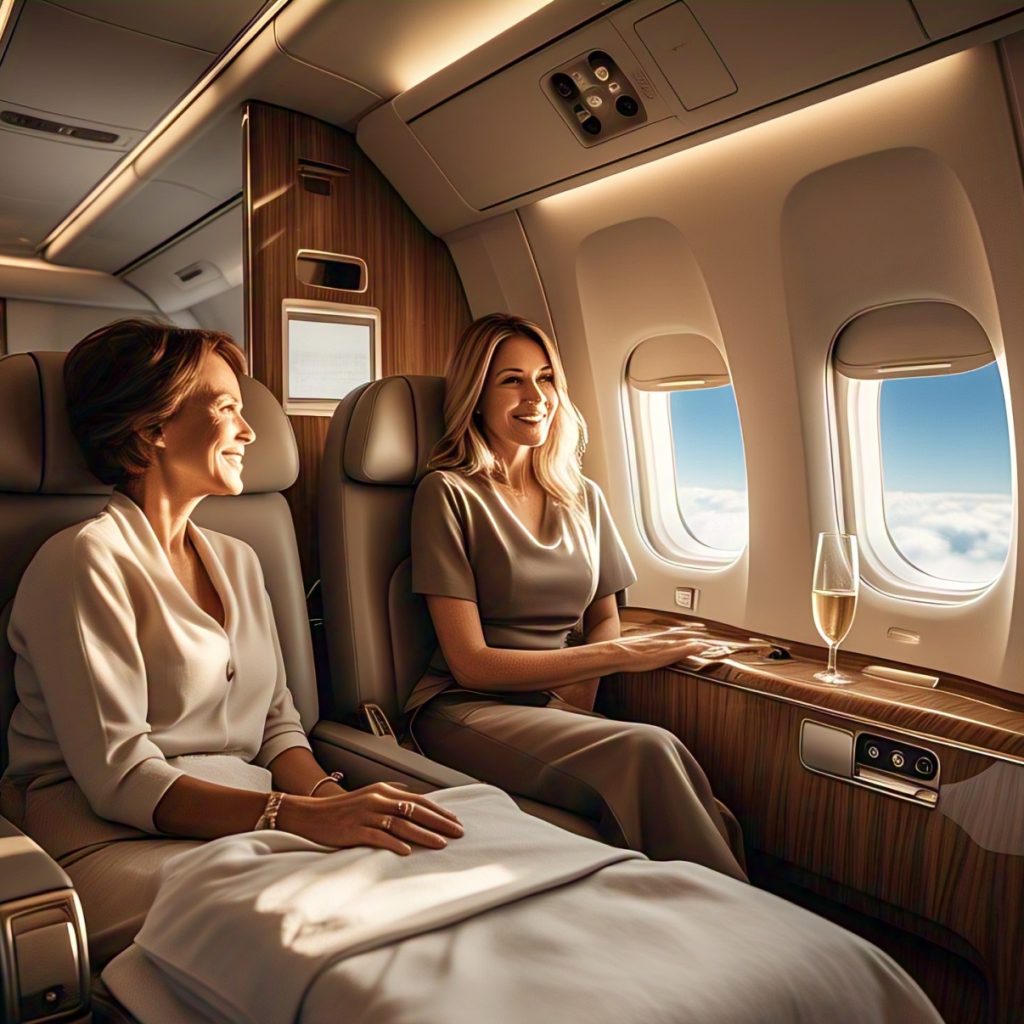Business class to Europe
Business class to Europe are a smart and stylish way to explore this incredible continent. Whether you’re traveling for business or leisure, these premium flights offer superior comfort, top-tier service, and valuable perks that make the journey as enjoyable as the destination. With the right timing and research, you can even find surprisingly affordable fares that fit your travel budget.
Last-minute travelers aren’t out of luck either. With patience and a watchful eye on travel deal websites, it’s possible to uncover excellent discounts on premium airfare. Timing, route selection, and flexibility are all key to securing lower fares.
One excellent resource is FlightsLux, a trusted platform that specializes in first and business class tickets. With 24/7 customer service and a user-friendly interface, FlightsLux makes it easy to compare prices, understand fare rules, and book with confidence.
As airlines continue competing for top-tier passengers, the value of flying business class grows. From improved cabin layouts to curated cuisine and personalized service, the experience justifies the price—especially on long-haul trips across the Atlantic. For travelers seeking comfort, productivity, and luxury, the investment often pays off.
Ten Facts About Europe
1. Largest Population: Russia
Russia holds the title for the largest population in Europe, with around 147 million people. Although Russia spans both Europe and Asia, about 77% of its population resides in the European portion. Therefore, it remains a dominant force on the continent. Meanwhile, Germany follows with 83 million people and sits right in the heart of Europe.
2. Highest GDP: Germany
Germany boasts the largest total GDP in Europe at $3.48 trillion. In comparison, the United Kingdom comes second with $2.66 trillion.
However, when considering GDP per capita, Luxembourg leads with a staggering $102,831 per citizen, compared to Germany’s $41,936. This clearly highlights a significant difference in wealth distribution per person.
3. Oldest Average Age: Italy
Italy has Europe’s oldest population, and it ranks second globally—just behind Japan. With 22.4% of Italians aged 65 and older, the country faces significant pension responsibilities within the EU. As a result, this demographic trend signals aging challenges across much of Europe.
4. Smallest Population: Vatican City
Vatican City is the smallest country in Europe—and the world—with just 1,000 residents, mostly clergy and officials.
Additionally, San Marino, surrounded entirely by Italy, has the second smallest population at 33,200 people, and spans only 61 square kilometers.
5. Smallest GDP: San Marino & Moldova
San Marino has one of Europe’s lowest total GDPs, with just $1.8 billion USD. It’s a small, independent republic surrounded by Italy.
On the other hand, in terms of GDP per capita, Moldova has the lowest in Europe at $2,279 per citizen, reflecting its economic challenges.
6. Youngest Average Age: Moldova
Moldova also ranks as the youngest country in Europe by average age, with its citizens averaging 36.7 years old.
While this isn’t young by global standards, it is still notable in an aging continent.
7. Largest Employer: Volkswagen
The largest private employer in Europe is Volkswagen, with nearly 626,000 employees.
Founded in Germany in 1937 under the German Labour Front, the car manufacturer once led global sales and is still a major economic powerhouse—despite recent controversies.
8. Most Foreigners: Switzerland
Switzerland has the highest percentage of foreign residents in Europe, with 24.6% of its population being non-natives.
Consequently, this high number of foreigners has sparked discussions about immigration policy and referendums.
Thus, it reflects ongoing debates across Europe about mobility and national identity.
9. Warmest Temperature: Malta
The warmest country in Europe is Malta, located just off the coast of North Africa.
With a year-round average of 32°C and around 333 sunny days per year, Malta enjoys a Mediterranean climate that makes it a popular tourist destination.
10. Coldest Temperature: Iceland
Iceland holds the title for Europe’s coldest average temperatures, hovering around 7°C annually.
Notably, its capital, Reykjavik, averages slightly below this and is one of the northernmost cities in the world.
Therefore, it offers a unique arctic climate experience.
The Advantages of a Trip to a Continent
Flexible Airport Options
One major advantage of planning a trip to a continent like Europe is the wide range of international airports to choose from.
This means travelers have more options for arrivals and departures, making it easier to find affordable business class tickets to Europe.
For example, if prices to Paris are too high, consider flying into Italy, Germany, or another major European city.
Being flexible with your entry and exit points significantly increases your chances of finding a great deal.
Therefore, always start your planning by identifying the most cost-effective routes.
Europe’s Major Airport Network
Europe is home to some of the busiest and most connected airports in the world.
With so many flight options available, it’s likely you’ll find a cheap business class ticket if you remain open to various travel hubs like Frankfurt, Amsterdam, Madrid, or Zurich.
In addition, leveraging this network can make it easier to build multi-city itineraries without dramatically increasing flight costs.
Traveling in the Offseason
Another advantage is traveling in the offseason, typically fall and winter.
During these months, airfare, hotel prices, and attraction costs are lower than during spring and summer.
However, the trade-off is less favorable weather, which can impact certain types of activities.
Therefore, always research weather conditions in your destination ahead of time.
If you’re visiting during winter, tailor your plans to focus on indoor attractions and cultural experiences.
Planning Around Weather
Bad weather in the offseason can affect flight connections and ground transportation, so it’s essential to understand cancellation and refund policies for flights, accommodations, and excursions.
As a precaution, ask questions and read the fine print before making bookings.
This way, flexibility and preparation will help you avoid unnecessary stress if your plans need to change.
Choose the Right Activities
If you’re visiting in colder months, focus your travel around indoor-friendly experiences such as:
Museums and galleries
Historic palaces and castles
Food and wine tours
Indoor performances and concerts
Meanwhile, avoid weather-dependent activities like hiking, boating, or visiting open-air ruins unless you’re confident the forecast will cooperate.
Final Thought: Enjoy the Planning Process
Knowing what to expect and planning smartly makes a huge difference.
Ultimately, being flexible, prepared, and informed ensures your vacation will be smooth and memorable.
Vacations are meant to be fun—so enjoy every step, from the planning to the journey itself.
What is included in a business class ticket to Europe?
Business class typically includes lie-flat seats, gourmet meals, priority boarding, extra baggage allowance, access to airport lounges, and enhanced onboard service.
How much does it cost?
Prices vary based on airline, season, and booking time, but a round-trip business class to Europe usually ranges from $2,000 to $5,000. Deals and discounted fares can drop it lower.Toggle content goes here, click edit button to change this text.
3. Is business class to Europe worth the price?
Yes—especially on long-haul flights. It offers significantly more comfort, privacy, and amenities, which can make the journey more productive and relaxing.
4. What are the best airlines for business class to Europe?
Top-rated airlines for It include Lufthansa, British Airways, Air France, Swiss International, and Turkish Airlines, offering premium experiences and service.
5. When is the best time to book it?
The best time to book business class to Europe is 2 to 5 months in advance. Booking during airline sales or using fare alerts can help you find better deals. Please
6. Can I get last-minute deals it?
Yes, but it’s rare. Some sites and travel agencies like FlightsLux offer last-minute business class to Europe deals, especially for flexible travelers.
7. How many bags are allowed with it?
Most airlines allow 2 checked bags and 2 carry-ons for business class to Europe, but baggage policies vary, so it’s best to confirm with your airline.
8. Do business class flights to Europe include lounge access?
Yes, It almost always includes access to airport lounges, where travelers can enjoy food, drinks, Wi-Fi, and relaxation before their flight




